-
- Marine Cybersecurity: Is Your Ship Safe? Are You Sure? Maritime Reporter, Dec 2013 #16
On February 12, 2013, President Obama issued Executive Order 13636 – Improving Critical Infrastructure Cybersecurity. Citing repeated electronic intrusions into critical infrastructure, the document states that it is the policy of the United States Government to increase the volume, timeliness, and quality of cyber threat information shared with U.S. private sector entities so that these entities may better protect and defend themselves against cyber threats. It directs the Secretary of Homeland Security (DHS), in coordination with Sector-Specific Agencies, to establish the Voluntary Critical Infrastructure Cybersecurity Program together with the owners and operators of critical infrastructure and other interested entities. If current regulatory requirements are deemed to be insufficient to protect critical infrastructure from electronic intrusions, the Sector-Specific Agencies are to propose prioritized, risk-based, efficient, and coordinated actions to mitigate cyber risk.
The prefix “cyber” is derived from a Greek adjective meaning skilled in steering or governing. The prefix is commonly used in the computer and electronic context to denote control. Thus, cybersecurity means control of computer or electronic security.
The National Institute for Standards and Technology (NIST) has developed a Preliminary Cybersecurity Framework (on the web at http://www.nist.gov/itl/upload/preliminary-cybersecurity-framework.pdf). It provides guidance to public and private organizations on managing cybersecurity risk. The objective is to encourage organizations to consider cybersecurity risk as a priority similar to financial, safety, and operational risk, while factoring in larger systemic risks inherent to critical infrastructure.
The DHS has established a Cybersecurity Training & Exercises Website (on the web at http://www.dhs.gov/cybersecurity-training-exercises) to assist organizations in becoming familiar with and staying current on cybersecurity threats and available countermeasures. The site itself, though, is frequently outdated.
Of more relevance to the maritime community is the US Coast Guard cybersecurity site accessible through Homeport. I have to admit that I am not a fan of the Coast Guard’s broad use of the Homeport website. Few things on the site are directly accessible. To get to the cybersecurity site, go the Homeport (on the web at https://homeport.uscg.mil), then click on Maritime Security under Missions on the left side of the screen, and then click on Cybersecurity, the third topic down in the center of the new screen. The site provides access to a variety of background documents and links to other cyber-related websites.
The National Infrastructure Protection Plan (NIPP), (available on the web at https://www.dhs.gov/sites/default/files/publications/NIPP_Plan.pdf), provides overall guidance regarding government efforts and recommendations for protection of critical infrastructure. Implementing that overall plan are 18 sector-specific plans, including the Transportation Systems Sector-Specific Plan (TSSSP), (available on the web at http://www.dhs.gov/xlibrary/assets/nipp-ssp-transportation-systems-2010.pdf). In accordance with Presidential Policy Directive 21 (PPD-21) on Critical Infrastructure Security and Resilience, the Department of Homeland Security and the Department of Transportation serve as co-chairs of the Transportation Systems Sector. The US Coast Guard advises the co-chairs on maritime issues.
The Coast Guard has included cybersecurity issues in its various Area Maritime Security Plans. It also hosts the Cybersecurity Homeport Community. To join the Community, you must already have a Homeport account. You then send an email to [email protected], asking to join. Members are provided with recommendations and activities helping them keep abreast of cybersecurity issues.
All of this may appear overwhelming to a ship owner or operator. After all, what is the likelihood that a terrorist will target your particular company or vessel or facility? Admittedly, the odds are low, but not zero. We know from the terrorist attacks of September 11, 2001, as well as the maritime attacks on the destroyer USS Cole in Aden on October 12, 2000, the supertanker Limburg off Yemen on October 6, 2002, and the supertanker M Star in the Strait of Hormuz on July 28, 2010, that terrorists seek soft targets. Marine facilities have not been exempt from terrorism, with attacks on Ashod, Israel (March 13, 2004); the Iraqi Khawr al Amaya crude oil terminal (April 24 2004); and the Karachi East Wharf in Pakistan (May 26, 2004). If your company or vessel or facility appears to be hardened, the terrorist will probably go elsewhere. There is plenty of evidence that the average maritime company or vessel or facility is vulnerable, particularly to a cyberattack.
Terrorism aside, there is a selfish reason for hardening your company, vessel, or facility against cyberattack. By taking such steps, you also may harden your operation against such threats as spurious electronic signals, malicious activity, industrial espionage, and criminal activities.
On May 10, 1993, the Coast Guard promulgated a regulation that came into effect on July 9, 1993 providing, among other things, that tankers equipped with an integrated navigation system (INS) could, under certain circumstances, use the INS with the auto pilot engaged while in the navigable waters of the United States. A suspension of the effectiveness of that regulation was issued on July 6, 1993 after a vessel utilizing its INS experienced a sudden, unintended, and drastic course change when the INS malfunctioned as a warship in the vicinity emitted a strong electromagnetic pulse. In its suspension order, the Coast Guard stated that currently (in 1993) “there is no performance standard for a shipboard INS in terms of accuracy, integrity, or reliability. Although the Coast Guard recognizes that the use of INS with an autopilot offers the potential to improve navigation safety, adequate testing and evaluation of this technology has not been conducted. The Coast Guard intends to conduct further rulemaking concerning necessary testing and methodology for certifying that performance standards have been met and will provide further opportunity for public input.” There have been no further developments regarding INS performance standards since 1993.
In the June 2003 edition of Maritime Reporter & Engineering News, I authored an article entitled: “AIS – Panacea or Pandora’s Box.” I pointed out that, when operating as intended, the Automatic Identification System (AIS) was an important navigational safety tool, particularly with respect to collision avoidance. I also pointed out, though, that because of the way the transceiver was configured, much of the data being transmitted could be manipulated. Specifically, I questioned reliance on AIS as a maritime security tool. I didn’t know the half of it. It has recently been demonstrated that spurious AIS signals can be transmitted showing vessels to be far from their actual location and on incorrect courses and speeds. AIS signals can also be generated showing phantom ships. One can no longer inherently trust the AIS signals being received by your transceiver and displayed on your ECDIS. The system needs to be revised to incorporate an authentication program.
In the September 2013 edition of this same magazine, I authored an article entitled: “GPS spoofing.” I pointed out that it is now possible to spoof Global Positioning System (GPS) and other space-based positioning, navigation, and timing (PNT) services. As with AIS, these PNT services must incorporate an authentication system or adopt other measures to avoid accidental or intentional presentation of erroneous data. Work is currently underway to address these issues. Even then, it will likely only make spoofing more difficult, but not impossible.
I do not claim to be prescient. I am only reporting the work of others, more technologically proficient than myself. I am saying, though, that steps should be taken by members of the maritime community to enhance their cybersecurity. There is a growing threat to marine safety, security, and environmental protection from the over-reliance on electronics to accomplish operational tasks. Adopting appropriate cybersecurity measures will reduce business risks.(As published in the December2013 edition of Maritime Reporter & Engineering News - www.marinelink.com)
-
- U.S. Flag Vessel Safety Maritime Reporter, Nov 2018 #12
on December 19, 2017. The Commandant’s Action can be found at: https://media.defense.gov/2017/Dec/21/2001859858/-1/-1/0/EL%20FARO%20 FINAL%20ACTION%20MEMO.pdf. Shortly after the release of these reports, questions immediately arose as to what action the Coast Guard and Congress would take to implement changes
-
- Shallow Water Monitoring Sensors Track GOM Nitrate Pulse Marine Technology, Dec 2014 #46
directly from the U.S. Geological Survey (USGS) report. For full details and references, please visit: http://ca.water.usgs.gov/pubs/2014/PellerinEtAl2014.pdf Abstract Accurately quantifying nitrate (NO3–) loading from the Mississippi River is important for predicting summer hypoxia in the Gulf of Mexico
-
- Is it Safer to Work Offshore in 2013? Marine News, Aug 2013 #18
Report”) (http://democrats.naturalresources.house.gov/sites/democrats.naturalresources.house.gov/files/documents/2013-05-10_BP_Spill_DangerousDrillers.pdf ). Among other things, the data demonstrated marked improvement in the number of injuries from offshore accidents, down 50% over the past two years
-
- Marine Casualty Reports – Clarified Maritime Reporter, Mar 2014 #16
with marine casualty reporting requirements. 79 Fed. Reg. 2466 (January 14, 2014). The Notice is available at: http://www.gpo.gov/fdsys/pkg/FR-2014-01-14/pdf/2014-00443.pdf. The draft NVIC is available at: http://www.regulations.gov/#!documentDetail;D=USCG-2013-1047-0002. Comments are due by April 14,
-
- By the Numbers: Oil Spill Response Marine News, Apr 2013 #8
resulted in fewer Coast Guard personnel having large spill experience. Access the full U.S. Coast Guard Report: http://www.uscg.mil/foia/docs/DWH/BPDWH.pdf (As published in the April 2013 edition of Marine News - www.marinelink.com
-
- Safety Not Optional Maritime Reporter, Oct 2003 #81
to a variety of products requested by manufacturers to be approved against SOLAS and other relevant standards. The ship owner can quickly download a .pdf format copy of the manufacturer's Type Approval Certificate showing the itemized SOLAS, FSS Code regulations along with class and government approvals
-
- TWIC’s Last Hurdle is Scaled Marine News, Oct 2013 #28
zones – indeed, the entire supply chain itself – that much safer. The List of approved TWIC Readers: http://www.tsa.gov/sites/default/files/publications/pdf/twic/twic_reader_qtl_current.pdf Intellicheck Mobilisa: www.icmobil.com Schneider Electric: www.schneider-electric.com (As published
-
- Numerical Towing Tanks A Practical Reality? Maritime Reporter, May 2015 #16
http://www.cd-adapco.com/presentation/maneuvering-predictions-early-design-phase-using-cfd-generated-pmm-data [2] http://www.dansis.dk/filarkiv/pdf-filer/2009/2/skibsdesign_force.pdf
-
- INSIGHTS: Rear Admiral Mark H. Buzby, USN (Ret) Marine News, Nov 2018 #14
in a thoughtful way. Application periods are open every six months and readers can find helpful information at https://www.marad.dot.gov/wp-content/uploads/pdf/Webinar-Presentation-2017.pdf.You recently awarded grants to myriad small domestic shipyards. Can we expect that this funding will continue? Just how
-
- ABS: Large Ship Hull Deflections Impact the Shaft Alignment Maritime Reporter, Sep 2004 #60
the ABS Guidance Notes on Propulsion Shafting Alignment is available from the ABS web site at: http://www. eagle, org/rules/down - loads/128-ShaftAlign.pd
-
- SENER Releases FORAN V70R3.0 Maritime Reporter, Oct 2014 #56
with ANSI/ISA-S5-1-1984/1992 regulation. The communications with other systems has been improved and now it is possible to export multiple diagrams in PDF format. Other options are the automatic labeling and improvements to check the diagram integrity. The solution for the standards definition, equipment
-
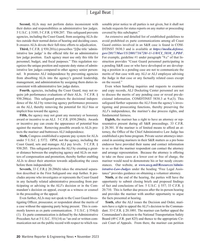 )
November 2023 - Maritime Reporter and Engineering News page: 20
)
November 2023 - Maritime Reporter and Engineering News page: 20.3 and is available at https://media.defense. istrative law judge’ is the of? cial title for an administrative gov/2017/Mar/15/2001716720/-1/-1/0/CI_5830_3.PDF. law judge position. Each agency must use only this title for For example, guideline #1 under paragraph “9.c” of that In- personnel, budget, and
-
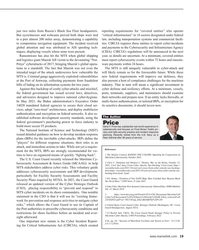 )
June 2023 - Maritime Reporter and Engineering News page: 19
)
June 2023 - Maritime Reporter and Engineering News page: 19in the CSO is that it will use its “existing frame- Cyber%20Assessment%20%20Annex%20Guide%20(MCAAG)_released%20 23JAN2023.pdf?ver=NE11YUspj_kNa3xRoMd0TQ%3D%3D work for prevention and response activities to mitigate cyber risks,” which allows the Coast Guard to use its Captain
-
 )
April 2023 - Maritime Reporter and Engineering News page: 21
)
April 2023 - Maritime Reporter and Engineering News page: 21Harbor.” https://www.bluesky-maritime.org/_? les/ugd/8ed502_ Operating under a 10-year charter (with an optional renew- e544d4d81fc74de9a528b3191fb779a9.pdf al), it is expected to begin service in the mid-2020s. Fincantieri’s Bay Shipbuilding, Sturgeon Bay, Wisconsin, Harvey Gulf Sustainability Report: will
-
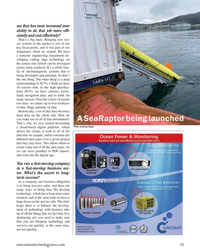 )
March 2023 - Marine Technology Reporter page: 39
)
March 2023 - Marine Technology Reporter page: 39the different data types over a given project that they may have. This allows them to create value out of all the data types. So we can wave goodbye to PDF reports, and welcome the digital age. You run a fast-moving company in a fast-moving business sec- tor. What’s the secret to long- term success? As
-
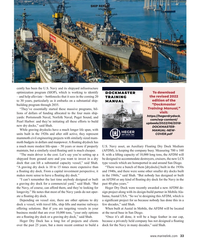 )
January 2023 - Maritime Reporter and Engineering News page: 33
)
January 2023 - Maritime Reporter and Engineering News page: 33. DOCKMASTER- While graving drydocks have a much longer life span, with MANUAL-NEW- units built in the 1920s and after still active, they represent COVER.pdf mammoth civil engineering projects with similarly sized mam- moth budgets in dollars and manpower. A ? oating drydock has a much more modest life-span
-
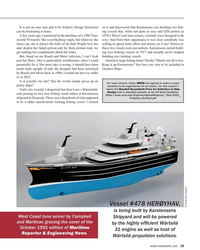 )
December 2022 - Maritime Reporter and Engineering News page: 19
)
December 2022 - Maritime Reporter and Engineering News page: 19orders at Karstensens https://www.usna.edu/EngineeringandWeapons/_files/2022_ shipyard in Denmark. There was a thumbnail of what appeared Program_Handout.pdf to be a rather anachronistic looking ? shing vessel. I clicked Vessel #478 HERØYHAV, © Karstensens Shipyard is being built by Karstensens West
-
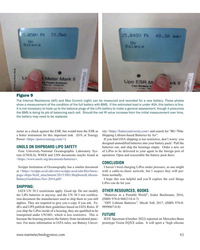 )
November 2022 - Marine Technology Reporter page: 43
)
November 2022 - Marine Technology Reporter page: 43with a cable-to-shore network, but I suspect they will per- page-ships/field_attachment/2015/SIO.ShipboardLithium- form normally. BatteryGuidelines.Nov-2014.pdf> I hope this was helpful and you’ll explore the cool things LiPos can do for you. SHIPPING: IATA UN 38.3 restrictions apply. Good tip: Do not modify
-
![MR Apr-22#43 .pdf.
[9] EBDG, “Galley News](https://images.marinelink.com/images/magazines/w200h250c/MaritimeReporter-202204-page45.png) )
April 2022 - Maritime Reporter and Engineering News page: 43
)
April 2022 - Maritime Reporter and Engineering News page: 43Program,” 30 September 2014. [Online]. Available: https://www. publications.usace.army.mil/Portals/76/Publica- tions/EngineerRegulations/ER_385-1-100.pdf. [9] EBDG, “Galley News You Can Use, Arc Flash Analysis: Plan, Protect & Save,” December 2015. [Online]. Available: https://ebdg.com/wp-eb- dg-content/upl
-
 )
March 2022 - Marine Technology Reporter page: 21
)
March 2022 - Marine Technology Reporter page: 21Brook, Long Island, New York. were out? tted with a novel self-recording digital camera and Ashley’s full Master’s Thesis paper, “Nicoll Thesis 2021.pdf”, LED lights system plus a Zebra-Tech environmental sensor to may be found at
-
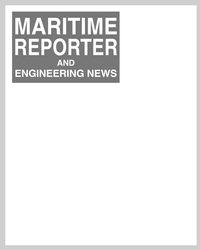 )
March 2022 - Maritime Reporter and Engineering News page: 21
)
March 2022 - Maritime Reporter and Engineering News page: 21Brook, Long Island, New York. were out? tted with a novel self-recording digital camera and Ashley’s full Master’s Thesis paper, “Nicoll Thesis 2021.pdf”, LED lights system plus a Zebra-Tech environmental sensor to may be found at
-
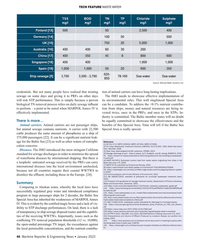 )
January 2022 - Maritime Reporter and Engineering News page: 46
)
January 2022 - Maritime Reporter and Engineering News page: 46for sewage discharges in order to minimise the spread [5] https://helcom.? /media/publications/Technical-guidance-for-the-handling-of-wastewater- in-ports.pdf of waterborne diseases by international shipping. But there is [6] MEPC 60/INF.4; Estimated nutrient load from waste waters originating from ships
-
 )
July 2021 - Marine News page: 30
)
July 2021 - Marine News page: 30scale and paper size and selected position- I program to “sunset” all raster and paper nautical charts. ing. Notes and other marginalia appear on separate PDF NOAA has produced electronic navigational charts pages. The app is now available as Version 1 and, even (ENCs) since 1993. In the 2019 notice, NOAA
-
 )
June 2020 - Marine News page: 58
)
June 2020 - Marine News page: 58verage fast and reliable Internet con- steps during ?ooding calculations, nectivity. The service includes new enhanced report to create large .PDF rate plans with no overage charges. documents - Dynamic limit de?ni- tion. Autohydro 6.11 is in beta ver- sion and will be released soon. New features
-
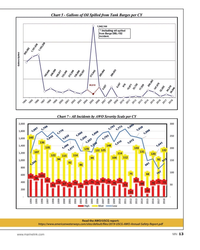 )
March 2020 - Marine News page: 13
)
March 2020 - Marine News page: 13Read the AWO/USCG report: https://www.americanwaterways.com/sites/default/f les/2019-USCG-AWO-Annual-Safety-Report.pdf 13 www.marinelink.com MN
-
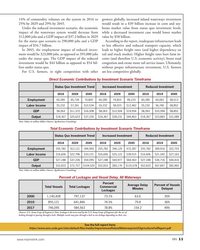 )
February 2020 - Marine News page: 11
)
February 2020 - Marine News page: 11on their size. See the full report here: https://www.ams.usda.gov/sites/default/f les/media/ImportanceofInlandWaterwaystoUSAgricultureFullReport.pdf 11 www.marinelink.com MN
-
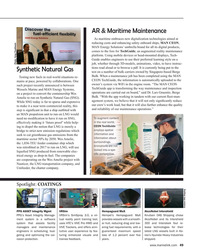 )
January 2020 - Maritime Reporter and Engineering News page: 49
)
January 2020 - Maritime Reporter and Engineering News page: 49preferred learning style on a Photo: Greg Trauthwein job, whether through 3D-models, animations, video, to have instruc- tions read aloud or to browse a pdf. It is currently being put to the Synthetic Natural Gas test on a number of bulk carriers owned by Singapore-based Berge Bulk. When a maintenance
-
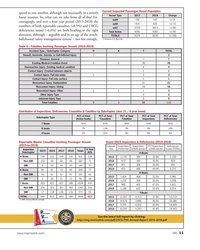 )
January 2020 - Marine News page: 11
)
January 2020 - Marine News page: 1110,6743,89636.5%15,086 2017 9,7914,00340.9%14,949 2018 10,2424,24341.4%14,343 See the latest full report by clicking: http://img.marinelink.com/pdf/USCG-PVA-Annual-Report-2016-2018.pdf 11 www.marinelink.com MN
-
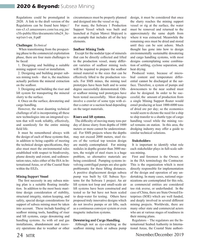 )
November 2019 - Marine Technology Reporter page: 24
)
November 2019 - Marine Technology Reporter page: 24removed and returned to the s3fs-public/? les/documents/isba24_ltc- launched at Fujian Mawei Shipyard is approximately the same depth from wp1rev1-en_0.pdf an example that includes all of the key where it was extracted. Meanwhile the elements. remaining ores must be dried and stored Challenges:
-
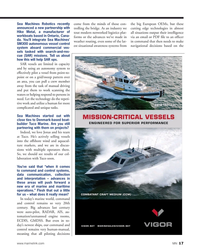 )
October 2019 - Marine News page: 17
)
October 2019 - Marine News page: 17networked logistics plat- all situations output their intelligence workboats based in Ontario, Cana- forms or the advances we’ve made in via an email or PDF
-
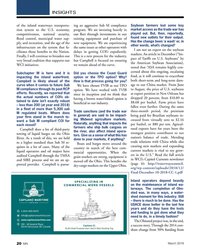 )
March 2019 - Marine News page: 20
)
March 2019 - Marine News page: 20. proved provider. Campbell is pursu- dry-cargo markets on the Upper Ohio. org/wp-content/uploads/2018/12/ Final-December-10-2018-CC-1.pdf Inland operators depend heavily on the maintenance of inland wa- terways. The completion of Olm- sted was, in many ways, a water- shed moment for this
-
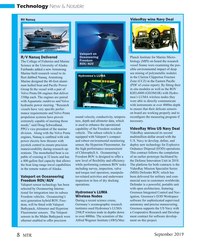 )
September 2019 - Marine Technology Reporter page: 8
)
September 2019 - Marine Technology Reporter page: 8. Armstrong in the Clarion Clipperton Fracture Marine designed the 40-foot alumi- Zone (CCZ) in the Eastern Paci? c num hulled boat and Paci? c Power (PDF of cruise report). By ? tting their Group ? t the vessel with a pair of in situ modules as well as the ROV Volvo Penta D6 engines that deliver
-
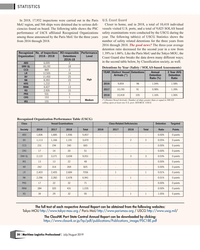 )
Jul/Aug 2019 - Maritime Logistics Professional page: 20
)
Jul/Aug 2019 - Maritime Logistics Professional page: 20.parismou.org / USCG http://www.uscg.mil/ The ClassNK Port State Control Annual Report can be downloaded by clicking: https://www.classnk.or.jp/hp/pdf/publications/Publications_image/PSC18E.pdf 20 Maritime Logistics Professional July/August 2019 |
-
 )
August 2019 - Maritime Reporter and Engineering News page: 63
)
August 2019 - Maritime Reporter and Engineering News page: 63? t situations, it may be possible to azimuth thrusters. This hybrid solution Liquid Cooled Drive that enables an ef- Drives/DKDDPC940A102_Telstar.pdf replace one engine with a battery and delivers 30 percent energy cost savings ? cient DC bus. Each ship is ? tted with 4 Flannery, Jim. “Harbor
-
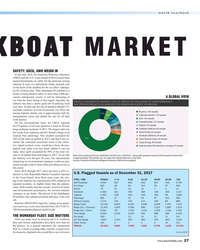 )
June 2019 - Maritime Reporter and Engineering News page: 27
)
June 2019 - Maritime Reporter and Engineering News page: 27,926 3,797 7,613 canwaterways.com/sites/default/files/2017USCG- Barge (Dry / Covered) 11,452 1,835 2,090 998 3,210 1,695 1,623 AWOAnnualSafetyReport31Jul2018.pdf Barge (Dry / Open) 8,281 747 1,019 1,416 1,529 1,322 2,245 Deck Barge 8,050 2,000 2,023 463 688 366 2,455 THE WORKBOAT FLEET: SIZE MATTERS Dry Cargo
